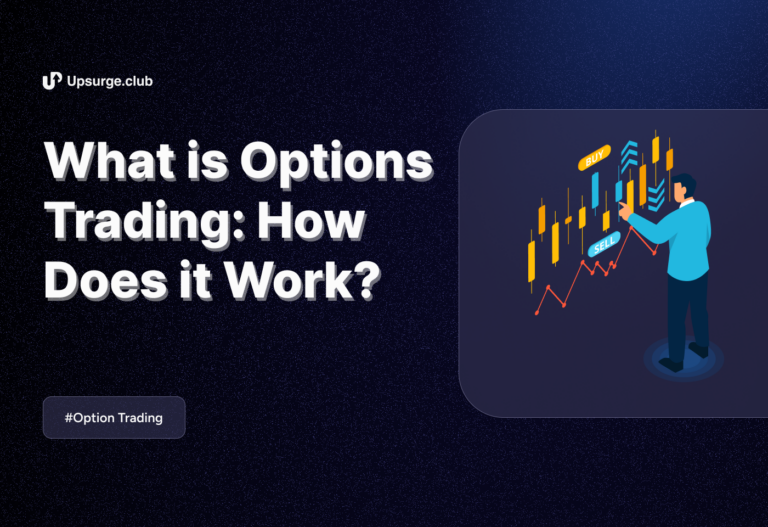Swing trading is a popular and effective trading approach to stock trading that capitalizes on short to medium-term price movements.
This strategy is appealing to those who prefer a more active role in the market. However, to achieve success and profit in swing trading, you need to learn swing trading strategies.
To help you with that, in this article, we will explore the top 7 swing trading strategies and how you make the most of price fluctuations.
7 Best Swing Trading Strategies
In this section, let us explore the top swing trading strategies used by India’s top traders.
Trend Following
In trend following, you observe stocks or assets moving consistently in one direction. You aim to catch these trends as they develop, buying when the price increases or selling when it falls.
Look for moments when the trend pauses or retraces slightly, presenting an opportunity to enter the trade at a favourable price.
By following the trend’s momentum, you seek to capitalize on continued price movement in the same direction, maximizing potential profits.
Breakout Trading
Breakout trading involves watching for when the price of a stock or asset breaks through important levels of support or resistance on a chart. When a breakout occurs, you enter a trade in the direction of the breakout, expecting the momentum to continue.
For instance, if the price breaks above a resistance level, it suggests potential upward momentum, so you might buy in anticipation of further price increases.
Conversely, if the price breaks below a support level, you might sell in anticipation of further declines.
Support and Resistance Trading
This strategy involves identifying levels on a price chart where the price tends to bounce back (support) or reverse (resistance).
When the price approaches support, consider buying, anticipating a bounce upward. On the other hand, when it nears resistance, consider selling, anticipating a pullback. Historical price movements determine these levels and are crucial for understanding market dynamics.
Trading near these levels can offer favourable risk-reward opportunities, but confirmation from other indicators is recommended for effective decision-making.
Moving Average Crossovers
This is a strategy where you use different moving averages (like the 50-day and 200-day) to decide when to buy or sell. When the shorter-term moving average crosses above the longer-term moving average, it signals a potential buying opportunity. This is known as a bullish crossover.
Conversely, when the shorter-term moving average crosses below the longer-term one, it is a signal to sell, indicating a possible downtrend.
This strategy helps you catch shifts in market momentum by paying attention to moving average patterns.
Relative Strength Analysis
Relative Strength Analysis involves comparing the performance of a stock or asset with a market index or sector. It aims to identify assets that are performing better than the broader market.
If a stock consistently outperforms its benchmark, it suggests strength and potential for further gains. Traders look for such assets to buy, expecting them to continue their strong performance.
This strategy helps traders focus on assets with higher relative strength, potentially leading to profitable trades based on their comparative performance.
Fibonacci Retracement Levels
Fibonacci retracement levels are a stock market trading strategy based on key mathematical ratios. These levels help identify potential support or resistance areas where prices might reverse.
By plotting retracement levels from a significant low to a high (or vice versa), traders can anticipate where price corrections may end and new trends begin.
Utilizing Fibonacci levels alongside other indicators strengthens decision-making in swing trading, enhancing the ability to enter and exit trades at optimal points while managing risks effectively.
Volume Analysis
Volume analysis in swing trading involves observing the amount of trading activity accompanying price movements. Increasing volume during price rises or declines indicates strong market participation, validating the trend’s strength.
Traders use volume as a confirmation tool to support their trade decisions. High volume during upward movements suggests bullish sentiment, whereas high volume during downward movements indicates bearish sentiment.
By paying attention to volume patterns, you can gain insights into the reliability of price trends and make more informed trading choices.
Conclusion
Mastering these top 7 swing trading strategies is essential for success in the market. By learning swing trading better, you equip yourself with the tools to capitalize on short- to medium-term price movements. Whether you are a beginner or an experienced trader, understanding and applying these strategies can help you identify the complexities of the market and potentially achieve your financial goals. Remember, successful swing trading requires practice, discipline, and ongoing learning. For comprehensive guidance and education on swing trading, explore Upsurge.club.



